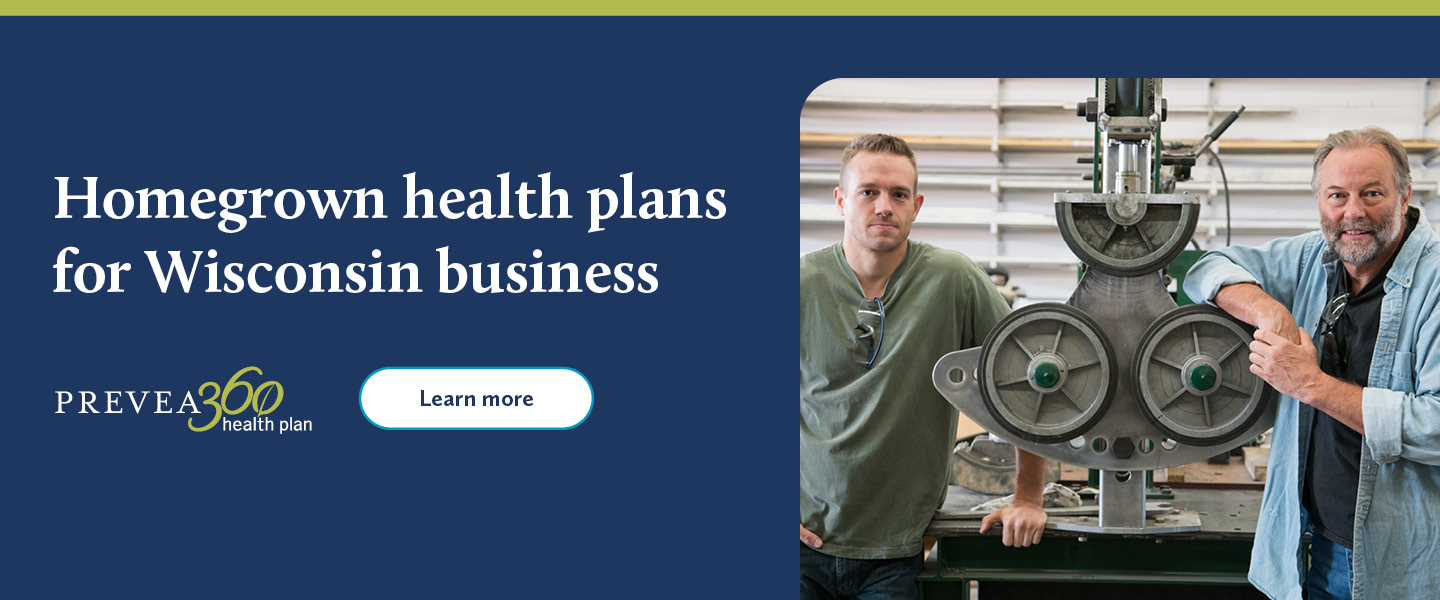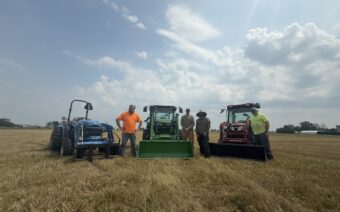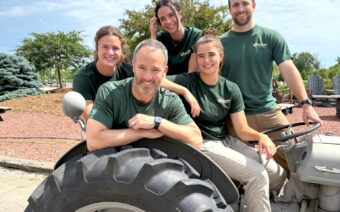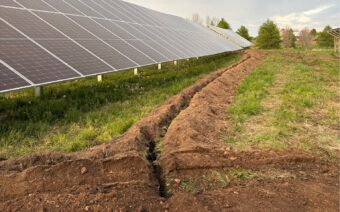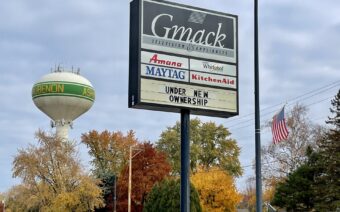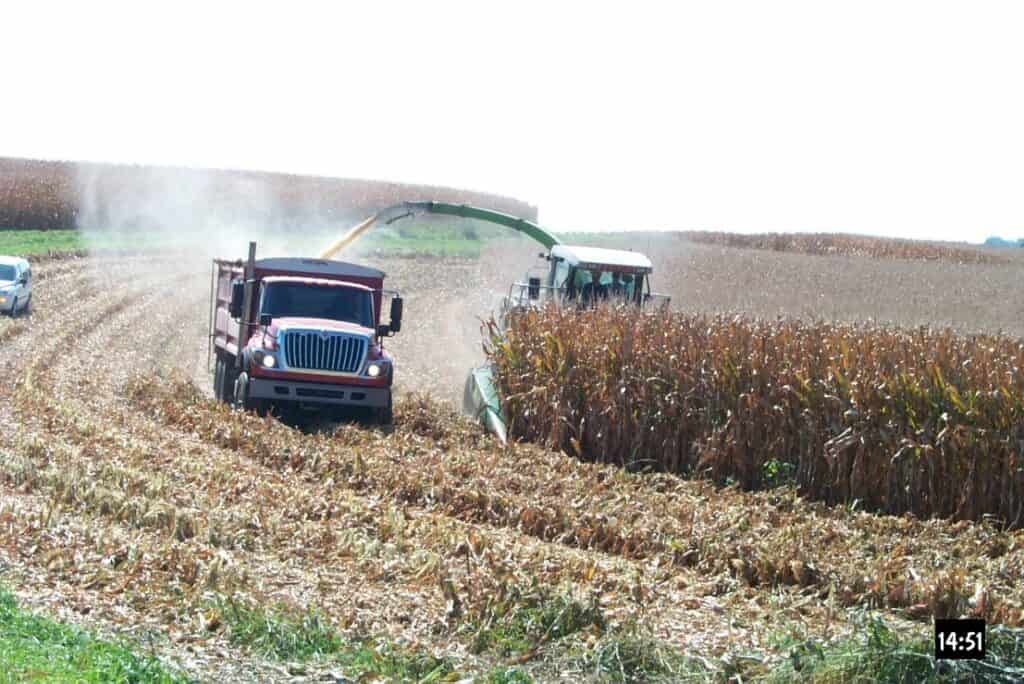
October 6, 2025
WISCONSIN – Though it may not be a household name, Account Manager Laura Kieser said Dairyland Laboratories Inc. plays a crucial role for farmers and animal nutritionists worldwide.
Described on its website (dairylandlabs.com) as “an independent, full-service agricultural testing laboratory,” Kieser said Dairyland assists farmers and animal nutritionists around the globe by providing quick and dependable analyses of what they feed their livestock.
“Dairyland Laboratories started out of a need, wanting to offer high-quality services and to develop a way of measuring… differences in forages and feeds and those types of things,” she said.
What this means, Kieser said, is that Dairyland provides detailed information about the makeup of feed, similar to nutrition labels on human food – though noting it is different from developing nutrition models.
“That’s why the nutritionists and feed companies are so important in our industry,” she said. “A lot of times, those people are trained to balance those diets.”
However, Kieser said nutrition specialists need the data produced in analysis labs, such as Dairyland, to balance livestock diets.
“We really do pride ourselves on being independent and understanding the relationship between a farmer, his nutritionist and the people he trusts,” she said. “We are not formulating a diet for a farmer. We are providing the information about the ingredients of feed, mixture or whatever it is they submit to us.”
Though recommending livestock nutrition is not its core competency, Kieser said that doesn’t mean Dairyland isn’t constantly educating its employees on the latest information – as it affects how they test and analyze customers’ samples.
“There are universities and key researchers who are constantly doing research in regards to ruminant nutrition… and there are nutrition models that nutritionists use to formulate diets, and they are continually adding to those,” she said. “So, it’s extremely important for a lab like ours to be plugged into those conversations.”
Agricultural analysis
Kieser – a former UW Extension employee, who has a handful of degrees in animal science and other various industries – said there are two ways agriculture labs test for a sample’s nutritional makeup.
“One is by NIR – near infrared,” she said. “The other is by wet chemistry.”
Wet chemistry, Kieser said, is a more involved method, but necessary in order to test via NIR.
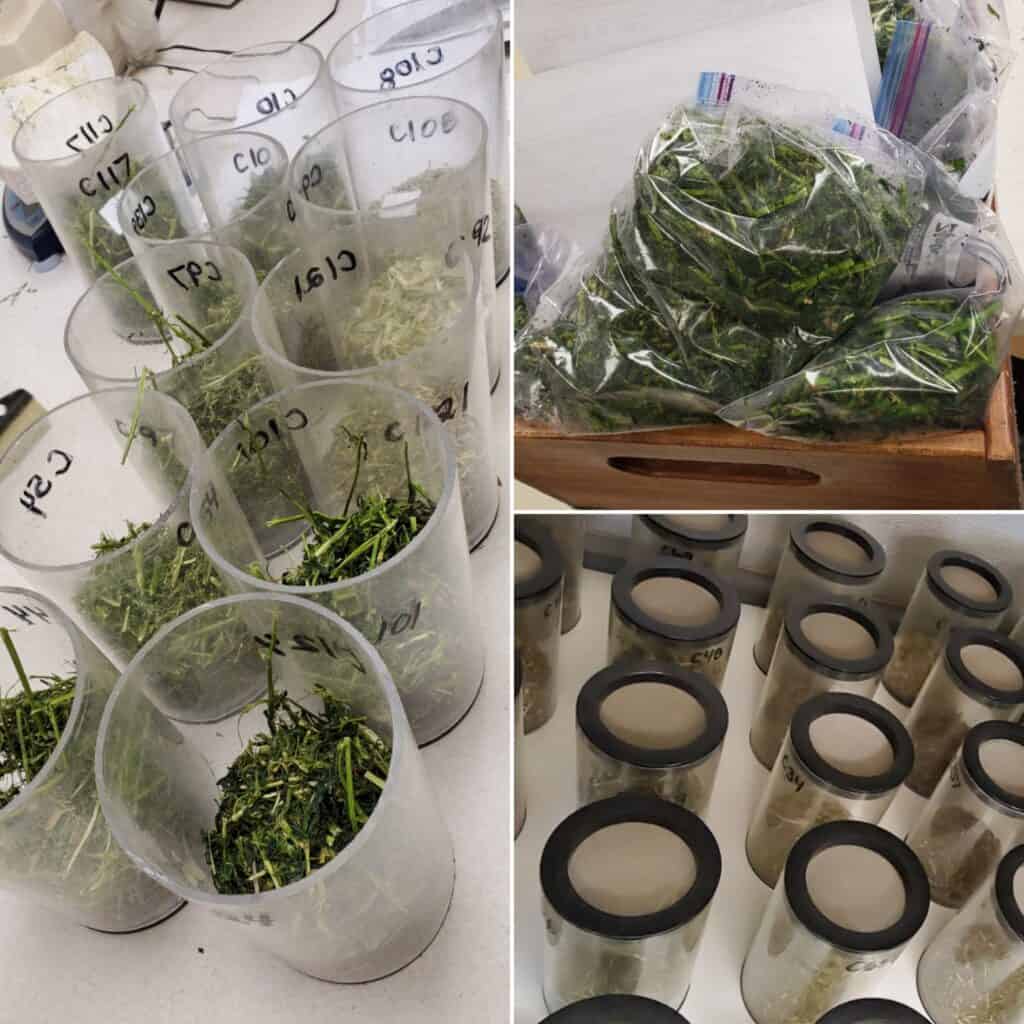
“When people started analyzing forages, wet chemistry would be the traditional way – scientists in a white coat doing various tests to find the different components that might be in that feed or forage,” she said. “After you do those tests over and over again, you will find a particular feed type or forage type – say, alfalfa – [tests] in a similar range of values most of the time.”
That data is then compiled to create NIR calibrations, Kieser said, and “put into a database.”
“We have some very smart and talented people who manage our NIR calibrations and are continually working on those, but they take all that wet-chem data and they build these calibrations such that when we do NIR analysis, we can do it faster, more economically and just as reliably as the wet chemistry,” she said.
However, Kieser said building NIR calibrations is not a “one-and-done” process and isn’t an applicable method to analyze every type of sample Dairyland receives.
“We can’t use NIR for custom grain mixes where we still [have to] do a lot of chemistry work,” she said. “We also are continually doing chemistry to make sure those calibrations are accurately predicting the forages that are coming through the lab.”
Because calibrations are specific to the labs which develop them, Kieser said there is no industry “standard” way to conduct an NIR analysis.
“There are other feed and forage labs in the country, and they all do good work, and each one builds its own calibrations,” she said.
Kieser said Dairyland’s NIR calibrations are shared among the company’s affiliate laboratories.
“With an NRI affiliate or a partner… they send their data into the cloud, and it all gets reviewed against our calibrations to make sure everything fits before it’s released to the customer,” she said. “So, in that case, those labs have paid an agreement to use our calibrations.”
Another notable aspect of Dairyland, Kieser said, is its digestion laboratory in Arcadia, where they work directly with animals to better predict how different feed samples will perform in livestock.
“We have a couple different sets of steers, and we keep them on very consistent diets so we can do certain tests to tell how [a customer’s sample] is going to perform,” she said.
Convenient chemistry
In the United States, Kieser said current and new customers of Dairyland are able to deliver their samples to one of its labs, or utilize the company’s sample drop boxes.
“[The drop boxes are] more convenient for our customers – to have somewhere closer to them versus having to drive all the way to a Dairyland location,” she said. “On our website, under locations, there are drop box routes, and if you scroll down, you can put your ZIP code in [for] anywhere in the country and find the [closest] Dairyland location or a drop box.”
Kieser said the drop boxes are especially convenient for livestock nutritionists who may be aiding multiple farmers at a time – with sample results delivered in PDF form via email as soon as the next day following drop off.
“Especially this time of year, drop boxes get very busy because of harvest season,” she said. “So, it’s easier for them to put samples in the drop box, have our couriers come through, pick them up and they get their results the next morning – sitting in their inbox and ready to go.”
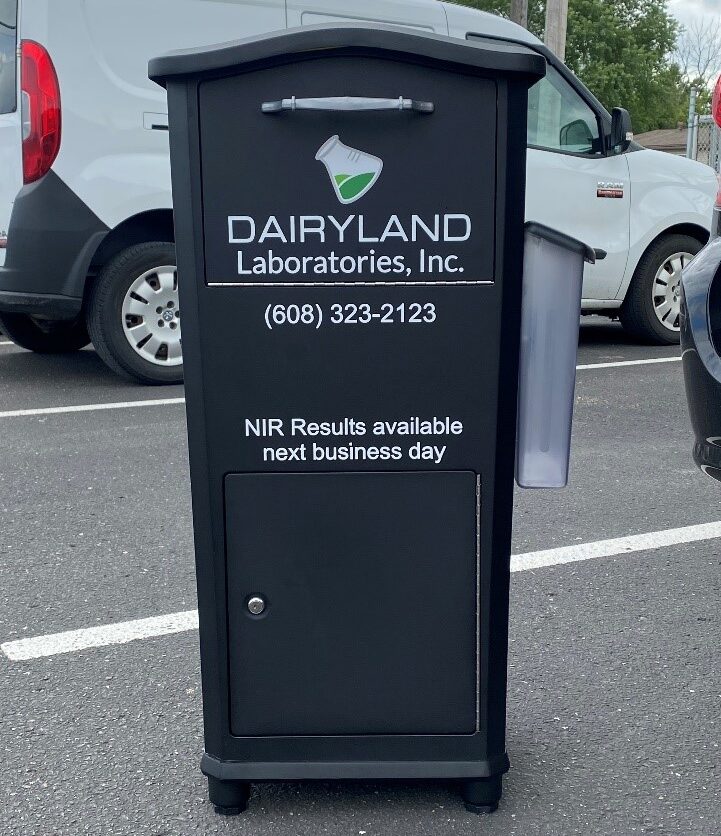
Kieser said Dairyland customers also have the option to build accounts on the company’s app, making sending samples and receiving results even easier.
“They can submit sample information, put a seven-digit code on the sample bag and put that right in the drop box so when that sample gets to the lab, our technicians just enter the seven digits [to access that customer’s specific test request],” she said. “Once that result is complete, it goes directly to the customer and or whoever else is built into the account.”
Kieser said Dairyland’s drop box routes are determined based on customer convenience and economic viability for the company.
“So, we will make changes to these routes,” she said. “We evaluate these things on a day-by-day [and] month-by-month basis.”
How customers choose to test their samples and utilize their results, Kieser said, depends on what their goals are for the product.
Regardless, she said their PDF will “probably [contain] more information than [they] know what to do with.”
“It would include everything from basic, proximate analysis – crude protein, fibers, etc. – to calculations, including your relative feed value, relative forage quality, energy values and so on and so forth,” she said. “Everything you would need, or your nutritionist would need, to either plug into your ration or to potentially market [the product] to someone else.”
Additionally, Kieser said despite Dairyland’s name, the lab does not limit its services to cattle farmers.
“We test feed for anything in the agriculture and livestock space,” she said. “Our test packages and the way we test feed is not species specific, [but] there are some calculations – in the way that some nutrients are reported – where that might be species specific.”
For example, Kieser said Dairyland offers an equine package.
“So, when the report comes to them, for instance, an equine digestible energy [value] is included because that’s an energy they’re used to seeing, versus, say, a ruminant report,” she said. “[Another] example, [for] a sheep feed, we know sheep are copper sensitive. So, it might be important to know that so we handle that feed in a certain way.”
What Dairyland doesn’t do, Kieser said, is test for specific species within a sample.
“Someone will often ask, ‘Can you tell me what’s in the feed?’” she said. “It’s important to clarify that we don’t identify the species of something… What we can do is to tell you the nutrient analysis of the sample.”
Industry innovation
Founded in 1958 by Glen Reit, Kieser said Dairyland has been owned and operated by the Taysom family for the last 65 years – with Kyle and Dave Taysom currently serving as its CEO and president, respectively.
“It’s an exciting company to work for,” she said.
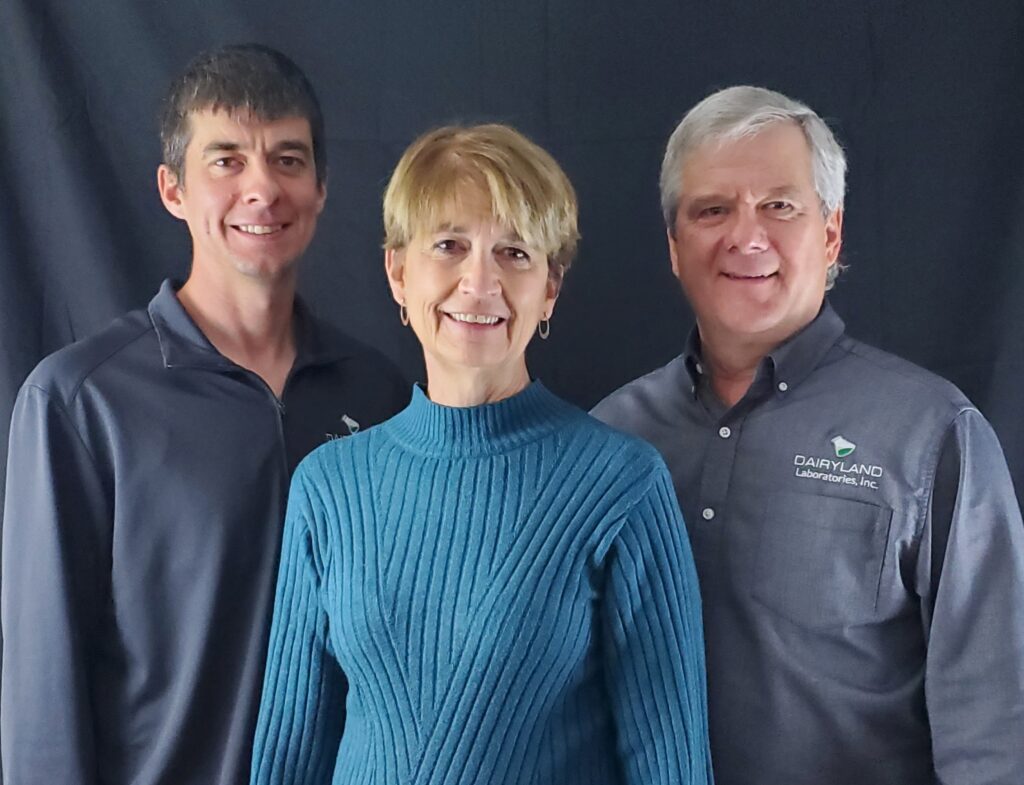
With its rich and expansive history in the agricultural chemistry industry, Kieser said Dairyland continues to push the boundaries of analyzing “feeds, forages, water, molds and mycotoxins.”
“We’ve continued to be on the forefront of the industry,” she said. “Finding the best and consistent tests that we can do for our customers.”
On its website, Kieser said customers can find a map highlighting the states and countries where one can find a Dairyland lab or affiliate lab analyzing samples using Dairyland’s calibrations.
“We have a whole network of laboratories that work with us and utilize our calibrations in different areas of the country and in different areas of the world,” she said. “It’s pretty awesome, when you sit back and think about it, how many people we can help every day.”
 Bringing the convenience of the city to the middle of nowhere
Bringing the convenience of the city to the middle of nowhere Sunshine to offset most of Dramm’s Algoma facility’s energy needs
Sunshine to offset most of Dramm’s Algoma facility’s energy needs 

